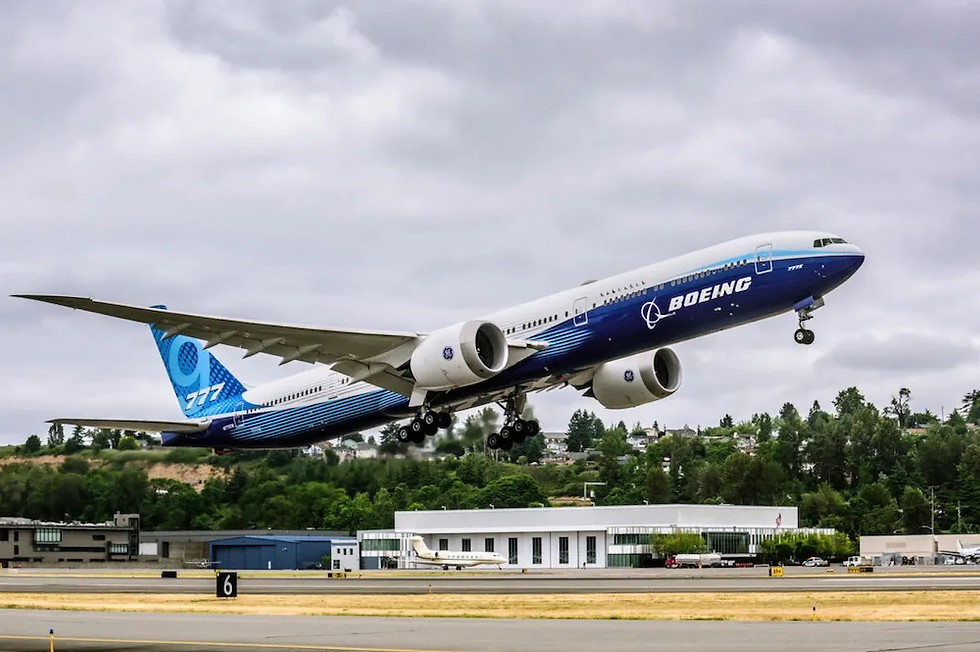Return of The Paris Air Show
- Garth Calitz
- Jun 21, 2023
- 3 min read
By Rob Russell

There are many claims to the biggest and best air show around the world. From Farnborough, Geneva, Paris, the list goes on, be it Civilian, Military, Business aviation or pleasure aviation.

But for many traditionalists, it is the Paris Air show, held bi-annually at Le Bourget Airport. Largely a trade fair, demonstrating military and civilian aircraft, it is attended by many airline executives, military forces and the major aircraft manufacturers, often announcing major aircraft sales. It starts with four professional days and is then opened to the general public from Friday to Sunday. It is not uncommon for huge orders from airlines to be announced, airlines announcing agreements with other airlines and military forces to make important announcements.

Due to the worldwide lockdown, as a result of the Covid virus, the show was last held in 2019, when the 53rd Air Show attracted 2,453 exhibitors from 49 countries and occupied more than 125,000 square meters. This year marks the return of the bi-annual event and what a show it is going to be.

But how did the air show come to be?
On January 11th, 1908, a group of aviation pioneers sought to split from the Paris Motor Show and focus on "heavier than air” flight. This group included some familiar names, including Louis Blériot and Louis Breguet. They had a meeting at the Automobile Club de France to go over the prospects of forming an association designed to expand the aviation scene. Until then the Paris Motor Show had devoted a certain part of its show to aviation

Thus, a federation of aeronautical industries was founded. The following year, the group launched its own aviation-themed event. No longer was the flight field just cornered into automobile events, such as at the 1908 Paris Motor Show.

As the Groupement des industries françaises aéronautiques et spatiales (GIFAS) explained: A number of aircraft manufacturers formed the ’Association des Industries de la Locomotion Aérienne, which proved its dynamic energy by staging the first, much-acclaimed international air show in 1909 at the Grand Palais.


At this stage of development, it seemed logical to amalgamate the Federation and the Association, The merger took place in July 1910, with Robert Esnault-Pelterie and André Granet being respectively appointed Chairman and Secretary General of the CSIA (employees’ Federation of aeronautical industries), which later became GIFAS (Groupement des Industries Françaises Aéronautiques et Spatiales: the French aerospace industries association). To this day, they are responsible for the organising and holding of the show.


The forming of such ventures would prove to have a significant impact on global travel and the economy. One of the founding members, Louis Blériot became a key driver in air travel during one of its most critical eras. As well as his history-making trip across the English Channel, he helped give way to the first powered and piloted monoplane. Moreover, as an innovator, he brought the idea of a single stick to handle both roll and pitch, with a foot-operated pedal for the rudder. These early air shows were also just before the advent of World War I, which would heavily feature aerial combat. This was the time when military aviation was dominant. It would also spur a series of aeronautical innovations that would be used in the commercial realm in subsequent years.

WWI would see a break to the air show. The event restarted in 1919 and would be held every two years until World War II. The show restarted in 1946, and in 1949 started to be held every other year, with Farnborough, UK, hosting a show in between.
Adapting over the years
Paris Orly Aeroport initially hosted the displays. However, in 1953, the show shifted to Le Bourget – it had become a specialist airport dealing in business air travel. The site’s location and far fewer movements than Orly made it a great suitor to host the Paris Air Show.

There were plenty of first and historical visits, to be had in the following decade, with the likes of the Boeing 747 and Concorde spotted at Le Bourget. By 1975, the Paris Air Show was acknowledged as the leading aviation trade show and with the formation of the Air Museum, 20 nations attended the event that year.

This year, there is every indication that the show will be the biggest and best held. Exhibitors have returned in their droves, They are sparing no cost in their displays and marketing. Displays include all the major aircraft manufacturers, both commercially, military and in General Business aviation. The latest technology available will also be on display as well as many ground support equipment.

An impressive flying display is also being lined up and the public days will host a feast of flying displays, from small business aviation aircraft up to the Boeing 777x and Airbus A350-1000.































Comments